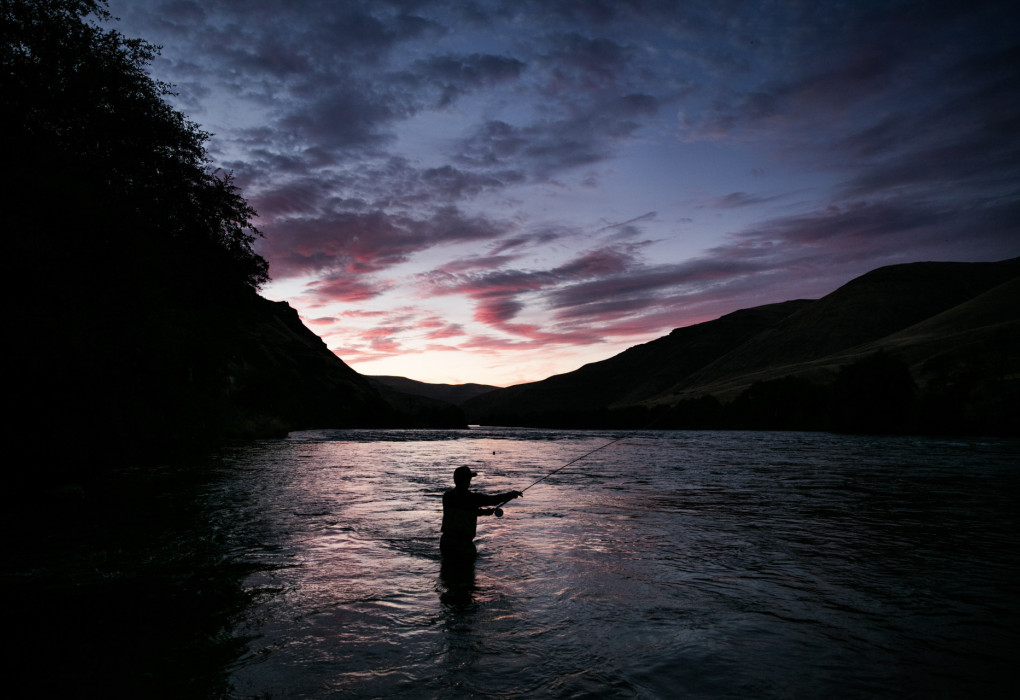ROI for Columbia River Salmon and Steelhead
By now, you might have seen press coverage of the recent publication by Jaeger and Scheuerell, which examined the return on investment of restoration spending in the Columbia River Basin on salmon and steelhead. Most of the coverage of this paper has focused on the failure of spending to increase wild salmon and steelhead, without processing what this study tells us about how to move forward.
So today, I’m going to briefly summarize what Jaeger and Scheuerell found but also encourage us to envision what it means for investing in wild salmon and steelhead in the future.
What was the goal of this study?
The authors noted that most previous studies looking at restoration spending in the Columbia River Basin only examined one specific species, life history stage, or tributary. This study wanted to determine if they could use restoration expenditures, in addition to other explanatory variables such as ocean condition, to accurately predict the number of all adult salmon and steelhead (both hatchery and wild for all species) returning to the Columbia Basin. This told them how restoration efforts increased both hatchery and wild fish. They then subtracted the estimated number of hatchery fish from the total number of fish returning in each species category to determine the effects of restoration on wild fish alone.
What were the results?
The key finding, the one you might have heard about on the news, is that all the investments in “restoration” have resulted in more fish, but no increase in wild fish. So basically, we’ve poured $9 billion into “restoring” the Columbia for hatchery fish while we’re no closer to recovering wild fish. The authors called out hatcheries specifically as one of the main limiting factors to wild fish, questioning further investment in artificial propagation while wild stocks continue to hang on by a thread.
The road ahead
So what does this mean going forward? Should we stop spending money on “restoration” in the Columbia River Basin? And why do I keep putting quotation marks around “restoration”? The short answer is no, we shouldn’t stop investing in salmon and steelhead in the Columbia River, but we should be more strategic about where the money goes and what kinds of projects it’s used to fund. Which brings us to the term “restoration.” Jaeger and Scheuerell included the costs of ALL “restoration” projects in the Columbia River Basin in their analysis. This includes funding for hatchery programs, paying anglers to kill northern pikeminnow, and one-off riparian planting projects.
In general, throwing gobs of money into what are effectively random projects and hoping that will increase salmon and steelhead numbers is a fool’s errand. Future investment needs to come from a cohesive, watershed-scale plan that takes into account what the limiting factors are in each tributary and addresses them. From our perspective at Native Fish Society, some of the elements that should be incorporated in such a plan include:
Breach the four lower Snake River dams;
Prioritize habitat restoration projects where the greatest gains are to be expected, likely in a few key tributaries to the Columbia;
Reduce investment in hatcheries, particularly in watersheds where habitat is largely intact, or where large, cohesive investments in habitat restoration are taking place; and
Remove dams without volitional fish passage.
Of course, this is not a comprehensive list of what could be done, but we remain hopeful that we can learn from our failures to make big gains for salmon and steelhead in the Columbia Basin in the future. For an example of a watershed where removing a hatchery program while investing in habitat restoration has resulted in a notable increase in wild fish, look no further than Coho in the Oregon coast’s Salmon River, one of our case studies of Wild Abundance.
Ultimately, it is our hope that the National Marine Fisheries Service and the Northwest Power and Conservation Council (the two main agencies responsible for determining conservation priorities and efforts in the Columbia River Basin) will take the results of this publication to heart and develop a basin-wide strategy for salmon and steelhead conservation investment.
